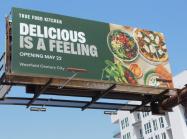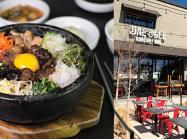Reducing food inventory loss is a critical task for your restaurant to maintain profitability and operational efficiency.
Food inventory is among the most important operational components of any restaurant. Whether yours is a small neighborhood diner or a high-end eatery, maintaining an efficient and well-managed process is crucial for maximizing profitability. Having the right quantity of food items on hand and in a safe condition is essential for meeting customer demand, minimizing wastage, and controlling your restaurant’s costs.
Food inventory loss can be one of the most disruptive influences on restaurants. If your business experiences excessive loss, it not only affects your bottom line but also creates operational challenges that impact customer satisfaction. To mitigate these challenges, your restaurant needs to identify and employ proactive strategies.
Get to Know the Risks
Perhaps the most important first step in reducing food inventory loss is gaining an understanding of the risks. Without information about how food loss occurs, it’s difficult to create relevant prevention and management strategies. It is vital to act from a place of knowledge so you can make more informed decisions.
Some of the key risks include:
Spoilage
Food items have a limited shelf life and improper handling or storage can result in spoilage. This may involve inadequate temperature control, failure to rotate stock, and lack of proper inventory management. When spoiled inventory becomes a regular occurrence, it can lead to significant financial losses and disrupt your restaurant's ability to provide quality service to customers.
Theft
Unfortunately, theft can occur in any business. Restaurants certainly aren’t immune to this issue. Food items, especially high-value ingredients, can be attractive targets for theft. Without proper security measures, you risk losing valuable inventory.
Inaccurate tracking
Without accurate inventory tracking systems or processes in place, it becomes challenging to keep an accurate record of stock levels. This can lead to overstocking or understocking of essential items. It also makes it difficult to notice when thefts occur. As a result, your restaurant can take a financial hit and experience disrupted operations.
Fluctuations in demand
Restaurants often experience fluctuations in customer demand. This can be due to factors like seasonality, special events, or changing consumer preferences. Failing to anticipate and manage these fluctuations can result in inventory imbalances, leading to waste and financial losses.
Prioritize Inventory Management
Responsible inventory management is key to preventing food loss and ensuring the smooth operation of your establishment. By implementing effective management practices, you can minimize waste, control costs, and maintain optimal stock levels.
Some primary strategies for responsible inventory management include:
Accurate inventory tracking
Implement an inventory tracking system that allows you to accurately monitor and record your stock levels. Utilize technology such as affordable inventory management software to streamline the process and ensure real-time updates. Make sure your staff regularly reconciles your physical inventory with recorded data to identify any discrepancies and take corrective measures promptly.
Reorder point accuracy
Determining the optimal reorder point (ROP) for your inventory can prevent you from experiencing shortages or wastage due to overordering. To establish this accurately, you’ll need to gather data on lead times for receiving stock, the optimal amounts of basic stock and safety stock, as well as your general unit sales per day. This data allows you to understand the minimum number of each unit that you can have on-site before triggering reordering. You may be able to bolster this with automated inventory ordering platforms to reduce the potential for errors.
Regular inventory audits
Conduct regular inventory audits to identify any discrepancies and address potential issues promptly. These audits help you detect theft, spoilage, and inaccurate recording. Implement a schedule for comprehensive audits, including physical counts, and compare the results against your recorded inventory to ensure accuracy.
Protect Your Assets
It’s important to treat food inventory as one of your most important assets. Just like any business asset, you must be proactive in establishing protective measures to maintain its integrity. This helps to minimize the impact of loss on your restaurant.
Some vital protective measures include:
Assessing storage equipment
Regularly assessing the condition of your storage equipment can help prevent inventory loss. Conduct inspections of refrigerators, freezers, shelving units, and other storage infrastructure. Look for signs of wear or malfunctioning components. Make sure you promptly address any issues through maintenance or repairs to ensure optimal functionality and security.
Insurance coverage
Food inventory loss can mean your business has to address economic uncertainty. Alongside having emergency funds and a crisis management plan, it is important to obtain comprehensive insurance coverage. This may include industry-specific policies such as spoilage insurance, business interruption insurance, general liability insurance, and property insurance. Insurance offers financial protection in the event of inventory loss due to unforeseen circumstances, helping you recover and mitigate the impact on your business.
Security protocols
You must commit to implementing security measures to safeguard your inventory against theft. Install surveillance systems, access controls, and alarm systems to deter criminals and prevent unauthorized access to storage areas. Train your staff on security protocols and emphasize the importance of maintaining a secure environment. These measures create a deterrent effect and enhance the overall security of your inventory.
Reducing food inventory loss is a critical task for your restaurant to maintain profitability and operational efficiency. By understanding the risks associated with inventory loss, you can develop targeted strategies to mitigate these challenges. Prioritize responsible inventory management, establish optimal reorder points, and conduct regular inventory audits. In addition, protecting your food inventory as a valuable asset is crucial for minimizing the impact of inventory loss.
Alongside these internal efforts, it’s important to consider the power of your supplier relationships. Collaborating closely with suppliers allows your restaurant to improve inventory planning and order management processes. By maintaining open lines of communication, you may be better informed about product availability, receive timely updates on any potential shortages, and negotiate more favorable terms and conditions.
Luke Smith is a writer and researcher turned blogger. He enjoys writing on a variety of topics but business, technology, and digital marketing topics are his favorite. When he isn't writing you can find him traveling, hiking, or getting into the latest tech.

















